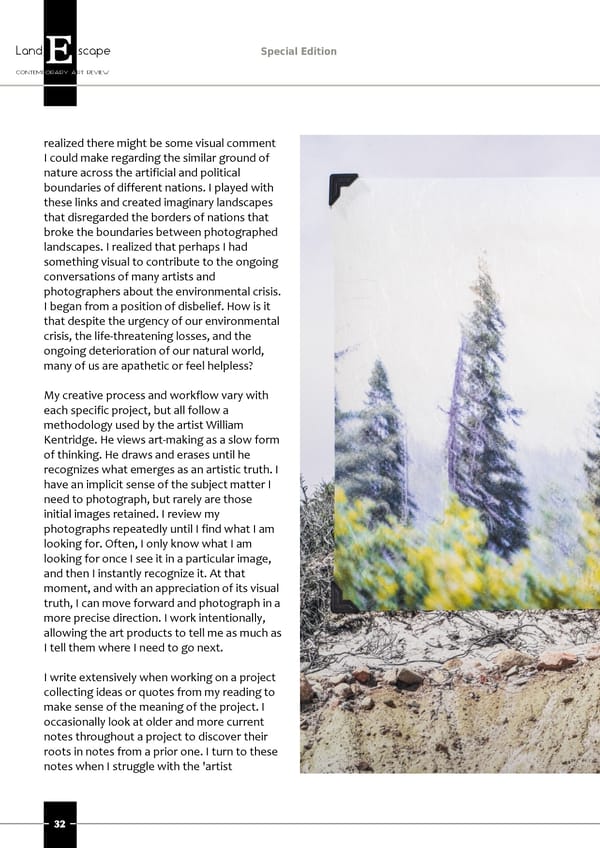Land scape Special Edition CONTEMPORARY ART REVIEW realized there might be some visual comment I could make regarding the similar ground of nature across the artificial and political boundaries of different nations. I played with these links and created imaginary landscapes that disregarded the borders of nations that broke the boundaries between photographed landscapes. I realized that perhaps I had something visual to contribute to the ongoing conversations of many artists and photographers about the environmental crisis. I began from a position of disbelief. How is it that despite the urgency of our environmental crisis, the life-threatening losses, and the ongoing deterioration of our natural world, many of us are apathetic or feel helpless? My creative process and workflow vary with each specific project, but all follow a methodology used by the artist William Kentridge. He views art-making as a slow form of thinking. He draws and erases until he recognizes what emerges as an artistic truth. I have an implicit sense of the subject matter I need to photograph, but rarely are those initial images retained. I review my photographs repeatedly until I find what I am looking for. Often, I only know what I am looking for once I see it in a particular image, and then I instantly recognize it. At that moment, and with an appreciation of its visual truth, I can move forward and photograph in a more precise direction. I work intentionally, allowing the art products to tell me as much as I tell them where I need to go next. I write extensively when working on a project collecting ideas or quotes from my reading to make sense of the meaning of the project. I occasionally look at older and more current notes throughout a project to discover their roots in notes from a prior one. I turn to these notes when I struggle with the 'artist
 LandEscape Art Review, vol.72 Page 175 Page 177
LandEscape Art Review, vol.72 Page 175 Page 177